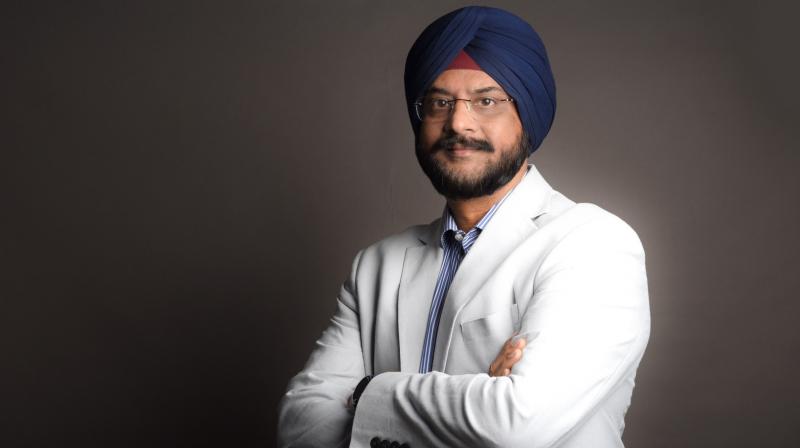In a significant leap forward for the D2H (direct-to-home) entertainment industry, Dish TV has introduced its new offering, ‘Dish TV Smart +’. Through this, Dish TV aims to seamlessly integrate TV and OTT services under one umbrella.
With Dish TV Smart +, customers will be able to access content across screens without an additional cost.
By offering OTT apps alongside TV subscription packs, the new offering intends to cater to the evolving needs of both new and existing subscribers.
Dish TV also aims to enhance user experience by partnering with TV and Mobile Original Equipment Manufacturers (OEMs) to seamlessly integrate their services of Smart + into these devices.
During the unveiling of Dish TV's Smart +, Manifest caught up with Sukhpreet Singh, corporate head of marketing, Dish TV and Watcho, to delve deeper into the innovative aspects of this initiative, its impact on entertainment consumption in India, as well as the marketing strategies and challenges associated with it.
Edited excerpts:
How does Dish TV plan to generate awareness about 'Smart +' amidst the competitive media landscape? What strategies are in place to distinguish these offerings from competitors, particularly in attracting new customers?
We leverage a range of channels to engage with our customers, including our proprietary platforms seamlessly integrated into the Dish TV experience, such as the initial channel upon opening the interface. Through feedback mechanisms, such as WhatsApp and in-app notifications, our goal is to engage with customers directly, ensuring effective communication for this new offering. Moving forward, our marketing strategy will focus on leveraging social media and digital advertising to reach both existing and new customers. Additionally, we are implementing traditional offline media campaigns to complement our digital efforts.
Could you elaborate on the allocation of the marketing budget for this initiative? Specifically, what percentage of the budget is earmarked for various marketing channels?
As for the breakdown, approximately 50% of our resources will be directed towards online channels, encompassing social media, websites, and digital advertising, with the remaining portion allocated to traditional offline mediums such as television. Additionally, we'll be initiating a campaign including a TVC once the product hits the market.
How can advertisers leverage the new offerings with a consumer content consumption data pool to gain a competitive edge?
While we currently have no specific plans in place, we anticipate offering a substantial amount of content through our OTT platform. This wealth of content data could indeed be leveraged to benefit advertisers and brands. However, it's essential to emphasise that our primary focus lies in delivering exceptional services and content to our customers, rather than monetising data. Nonetheless, within the framework of privacy and data protection regulations, there is potential for customisation through advertising engines.
How do you plan to sustain the profitability achieved in the recent quarter, and what are the strategies to further grow the business?
These initiatives are primarily geared towards enhancing retention rates and capturing a larger share of new customers. By improving retention and expanding our subscriber base, we anticipate growth in both top-line and bottom-line performance for the coming quarter.
What's the user allowance per subscription on Smart +? How does it accommodate multiple family members under one account?
Our D2H subscription operates with a single registered mobile application. Regardless of the user's location, they can access our content using their registered mobile number or any device. However, if a user subscribes to a package allowing a certain number of logins on a set number of screens, that policy will be enforced.
What are the company's plans to expand its services and reach in the Indian market, especially in rural areas? Which markets in India are stronger for Dish TV?
Our extensive physical distribution network already spans rural areas, leveraging partnerships throughout the country. We've established a presence in feeder markets and rural areas nationwide. This existing infrastructure will serve as a crucial channel for communicating our new proposition, particularly targeting markets in India experiencing significant growth compared to others. While digital content platforms are burgeoning across all regions, consumption trends typically begin in larger cities before permeating to smaller ones.
In what ways does Dish TV anticipate this innovation will impact consumer behaviour and viewing habits, and how does it align with broader industry trends and shifts in media consumption patterns?
We aim to comprehend this innovation and its impact on consumer behaviour. As we strive to facilitate seamless access to content across platforms and technologies, our goal is to make content available on any screen, regardless of the source—whether it's satellite broadcasting or OTT. This convergence in consumer behaviour, where the source of content becomes immaterial, is what we anticipate and aim to foster.
Over the next three to five years, our focus is on empowering our customers to enjoy content with minimal complexity, ensuring it's accessible on a single platform and at an affordable price point.
Lastly, in regards to forging partnerships, how does the company address challenges, especially with OTT channels such as Netflix, which are not part of the bundle?
Navigating the diverse landscape of content providers presents its challenges. Each company has its strategy, but common objectives often lead to collaboration. We engage with every partner to ensure content delivery aligns with our goals. Ultimately, our focus remains on delivering a seamless experience to the end customer, beginning with TV.











